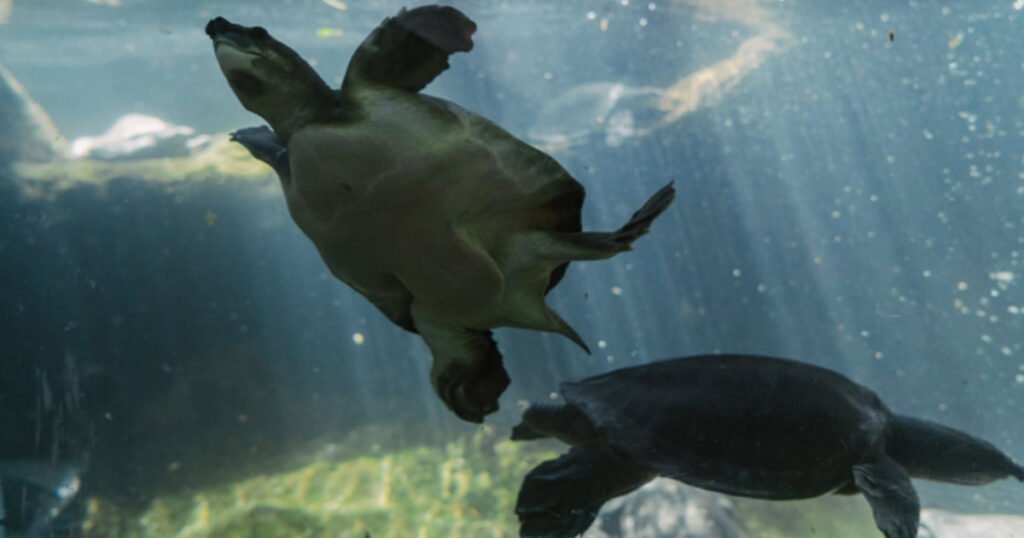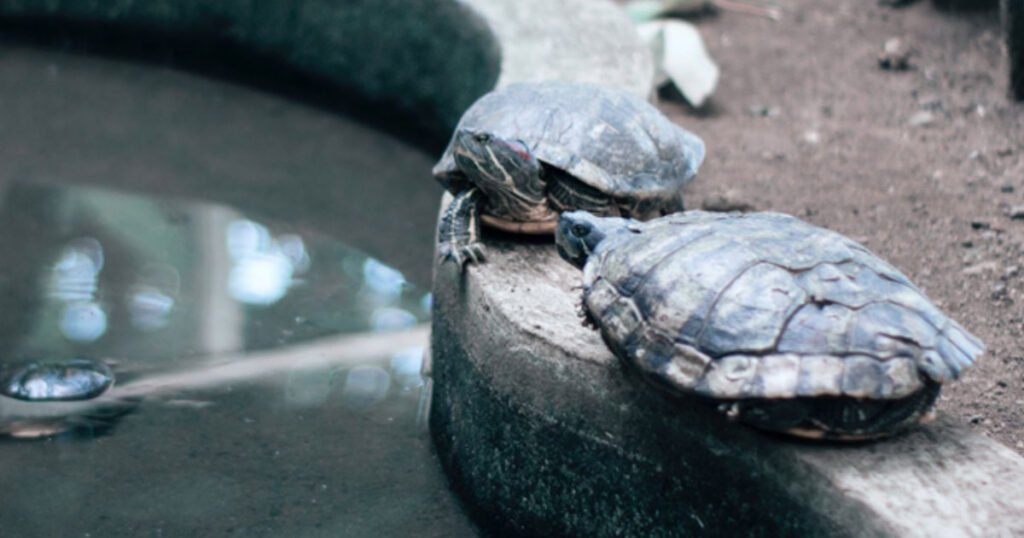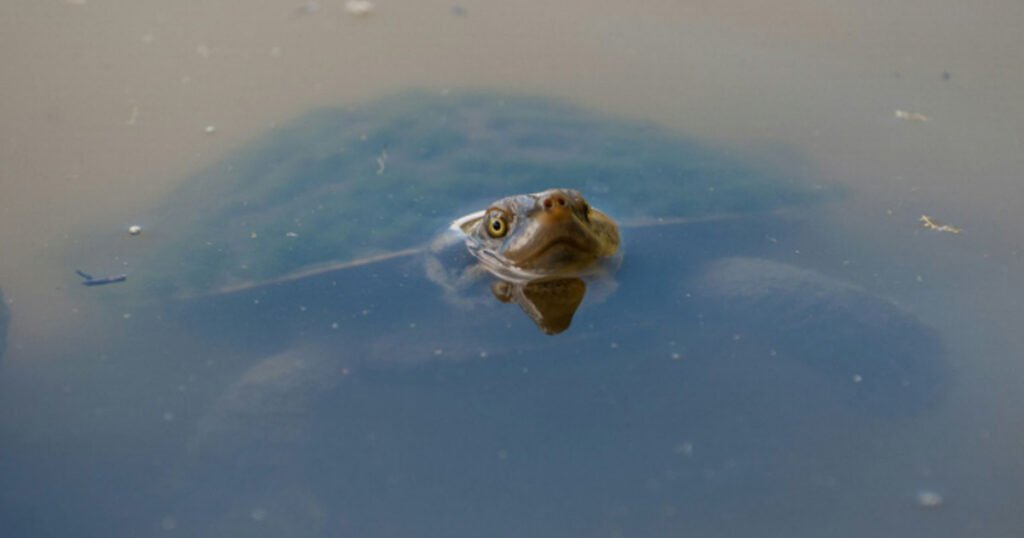The snapping turtle is one of the most interesting turtle species. With their large size, and distinctive head that extends far out of their shell, they are generally very easy to spot. Snapping turtles prefer to live in small ponds and streams with slow-moving water. Some kinds of snapping turtles live in swamps and brackish waters.
Do you know, what to feed snapping turtles? If so, then read this article. You will find out the food list for a snapping turtle along with the feeding plan.
Table of Contents
What to Feed Snapping Turtles?
Snapping turtles are omnivores, therefore they eat both vegetables and animal meat. Snapping turtles eat small animals like tadpoles, fish, frogs, salamanders, small turtles, leeches, snails, snakes, worms, crayfish, birds, and more. Snapping turtles eat algae, yellow pond lilies, water fern, water lettuce, bog moss, and other aquatic vegetation.
There are two types of snapping turtles, and each has a unique method of catching food.
Alligator Snapping Turtles
Alligator snapping turtles are giant freshwater turtles with large heads and coarse, thick shells. This type of turtle has three rows of spikes on its shell, which frequently reminds people of alligators. Alligator snapping turtles will devour dead fish, snakes, minnows, and even other turtles.
Alligator snapping turtles prefer hiding in the water behind plants while waiting for their prey to arrive. The interior section of the alligator snapper’s mouth is camouflaged, preventing other creatures from seeing it in the water.
The tongue of the alligator snapping turtle resembles a worm. The turtle rests motionless in the water, its mouth open. It waits for its prey to take the bait. When a fish or other animal bites on the tongue, the alligator snapper will swiftly seal its strong jaws and eat the meal.
Common Snapping Turtles
The tongues of common snapping turtles differ from those of alligator snapping turtles because they are not formed like worms. These turtles do not have teeth, but they do have strong jaws and beaks that they employ to consume animals and plants.
Common snapping turtles will eat small fish, insects, snakes, birds, frogs, and plants. The turtles will consume other turtles as well as dead animals. A young common snapping turtle may frequently attack another turtle’s tail, mistaking it for a worm.
Snapping turtles eat the following animals:
- Tadpoles
- Fish
- Frogs
- Crayfish
- Birds
- Nestlings
- Mallards
- Snakes
- Worms
- Bird eggs
- Geese
- Small mammals
- Salamanders
- Small turtles
- Leeches
- Snails
- Carrion
- Insects
Snapping turtles eat the following plants:
- Leaves
- Yellow pond lily
- Common duckweed
- Water hyacinth
- Hydrilla
- Common arrowhead
- Bog Buttons
- Bog moss
- Algae
- Water fern
- Water lettuce
- Mermaid Weed
Snapping turtles eat the following fruits(Occasional treat):
- Strawberries
- Raisin
- Lime
- Apple
- Prune
- Peach
- Lemon
- Apricot
- Date
- Blueberry
- Mulberry
- Raspberry
- Guava
- Watermelon
- Avocado
- Persimmon
- Mangoes
- Nectarine
- Grape
- Orange
- Pomegranate
- Cantaloupe
- Kiwi
- Banana
- Coconut
- Honeydew
Snapping turtles eat the following Supplements:
- Multi-vitamin
- Vitamin D3
- Calcium
What Amount Should You Feed A Snapping Turtle?

Snapping turtles eat whenever they can. Even the captives have this savage instinct. So, if you give these creatures food, they will consume it without thinking twice.
Keepers believe that snapping turtles continue to eat even when they are satisfied. Scientists recommend that pets become accustomed to the sight of their owner within the first few months. These critters are sophisticated enough to recognize the feeders. So, anytime the owner approaches the habitat, the snapping turtle rises to the surface and begs for food.
If you take pity on the snapping turtles and continue feeding them, you risk overfeeding your pets. As a result, you need first to determine how much food is required to satisfy the snapping turtles’ appetite. It will certainly help you avoid overfeeding the turtles. When it comes to determining a snapping turtle’s food intake, several criteria and procedures are widely used. Now we discuss the most efficient methods:
Fifteen-Minute Route
According to experts, if a snapping turtle eats at a typical pace, it will take 15 minutes to fill its stomach. This notion led to the development of the 15-minute feeding strategy.
Here is what you should do. Provide a large amount of food inside the snapping turtle’s enclosure and leave for 15 minutes. Allow the pet to consume as much as it can within that time frame, and then remove the remainder.
Here you go! You fed your turtle the exact amount of food without any problems.
What if your snapping turtle eats faster? In that instance, the pet may be at risk of overfeeding. However, the likelihood of such instances is lesser than you may imagine. Following the 15-minute guideline may result in wasted food or leftovers. Instead of tossing away food, use it for the next meal.
Head Methodology
If you want to avoid food waste, use the head method. The technique is somewhat sophisticated, and it takes into account your assumption quality.
According to the method, you should visualize your pet turtle’s head as a hollow container. You must give the turtle the correct amount of food that will fill up the empty bowl. If you fail to match the quantity, your turtle may become obese or malnourished. However, every owner eventually adjusts to the process.
If you find this procedure difficult, use a little container the same size as your turtle’s head to complete the task. You may feed slightly more or less than the desired quantity. These minor variations have little impact on the snapping turtle’s health. As the snapping turtle’s appetite changes with maturity, you may need to switch to a different-sized container every 6 months.
What to Feed a Baby Snapping Turtle?

Feeding a baby snapping turtle requires a meal that matches its nutritional requirements. Here’s what to feed a baby snapping turtle:
- Commercial Turtle Food: There are commercial turtle pellets or sticks available that are specifically designed for water turtles such as snapping turtles. These often give a well-balanced meal rich in essential elements.
- Live Prey: Baby snapping turtles are carnivorous and feed on small fish, insects (such as crickets or mealworms), worms, and small crustaceans. To eliminate choking concerns, ensure that the prey is the suitable size for the turtle.
- Fresh Greens: Snapping turtles are generally carnivorous, but they may occasionally consume fresh greens. Offer leafy greens such as spinach, kale, or lettuce as a supplement to their diet.
- Supplements: Consider giving calcium and vitamin supplements to ensure that your young snapping turtle receives all of the nutrients it requires for healthy growth. Calcium powder is commonly used for dusting live prey.
- Variety: Providing a varied diet ensures that your turtle receives all of the vital nutrients. To keep their diet interesting and balanced, they should rotate between different foods.
What to Do and Don’t Do When Feeding a Snapping Turtle?

You now know the snapping turtle diet chart and feeding schedule. Here are a few strategies that will boost your managing skills.
- When feeding the turtles animals or insects, keep the bones and skin completely intact. Snapping turtles have powerful jaws, which allow them to shatter bones and tear the animal apart.
- Shred or slice the meal into small chunks. Snapping turtles are excellent biters, but they do not chew well. If the pets attempt to devour a large chunk of food, they may choke.
- Toss the food into the water, and the snapping turtle will get to it. To simplify feeding management, install a turtle feeder inside the habitat.
Read More: Can Sea Turtles Bite
Conclusion
So, what to feed snapping turtles? The snapping turtles are far from picky eaters. Create a diet chart for these creatures, ensuring an appropriate ratio of animal protein, plant matter, and supplement amount. Avoid harmful and dangerous meals for turtles. Finally, strictly adhere to the feeding schedule to promote your pet’s healthy growth.
